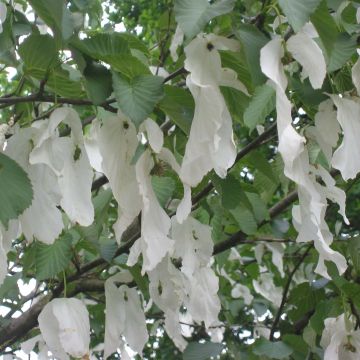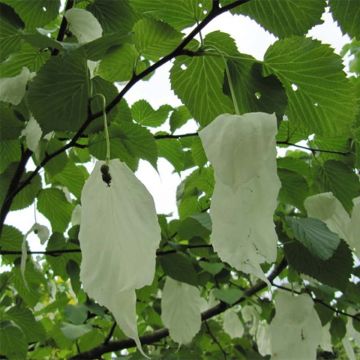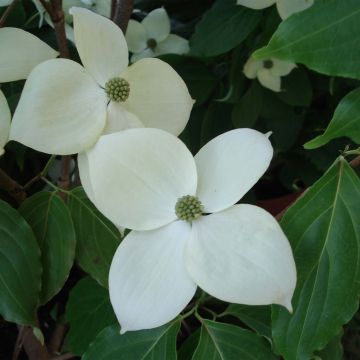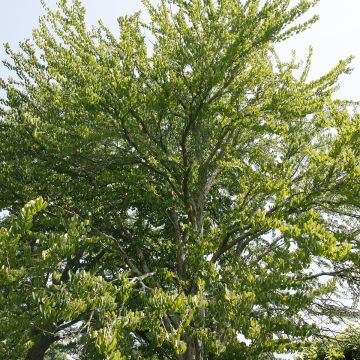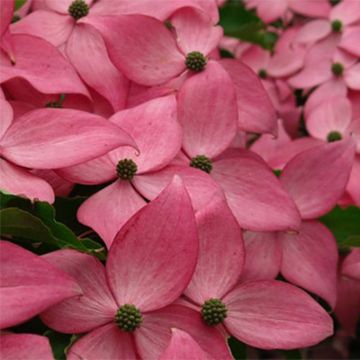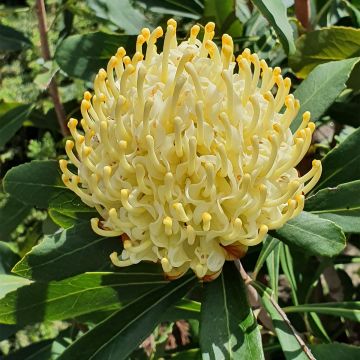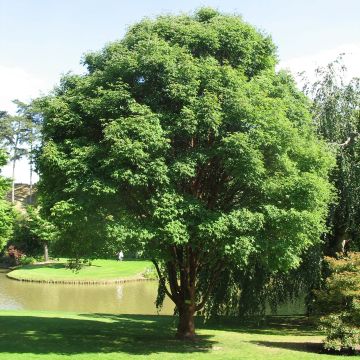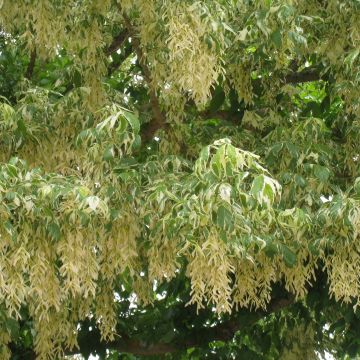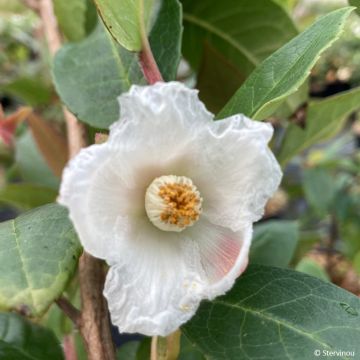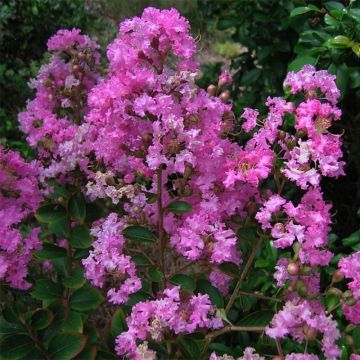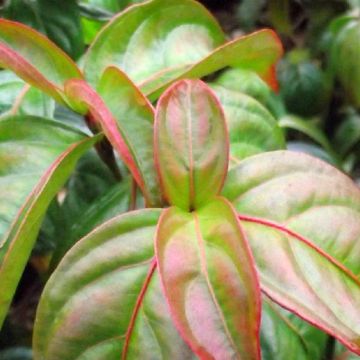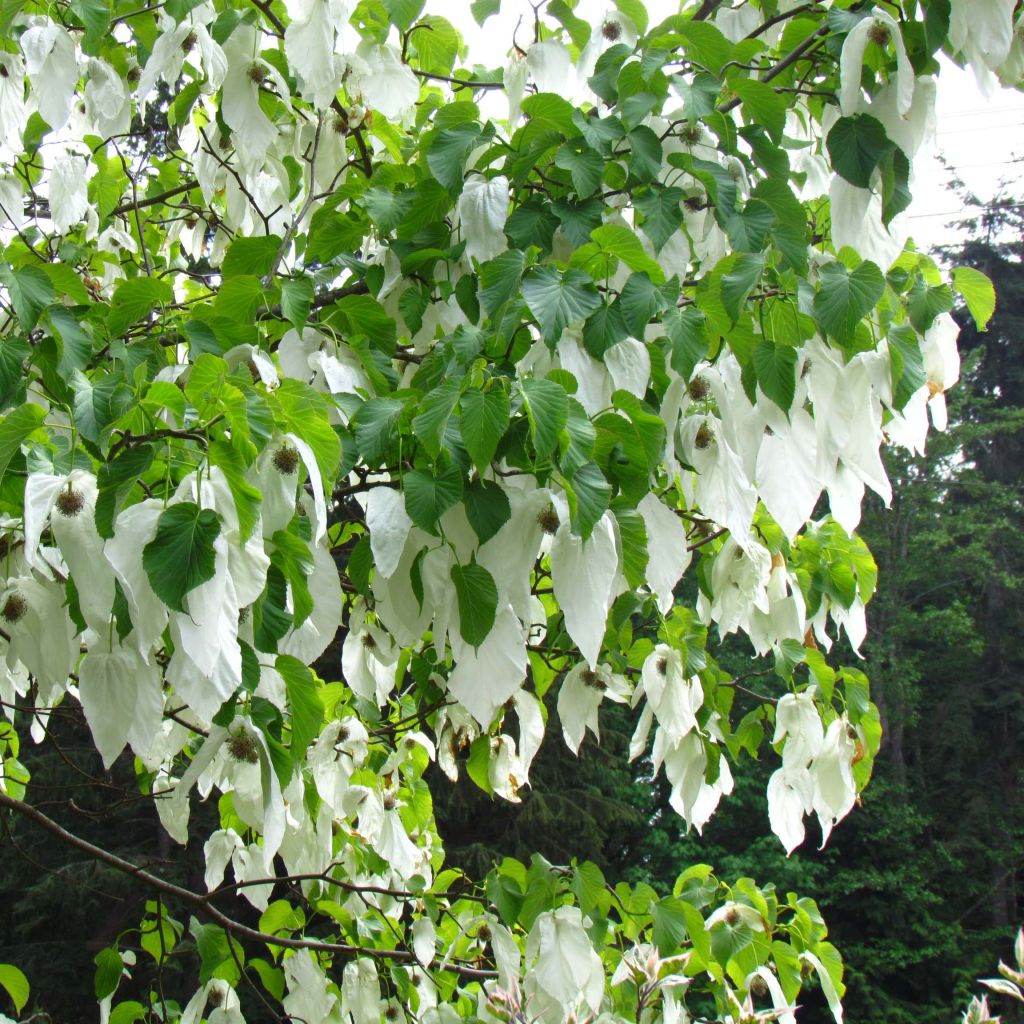

Davidia involucrata var. vilmoriniana - Dove Tree
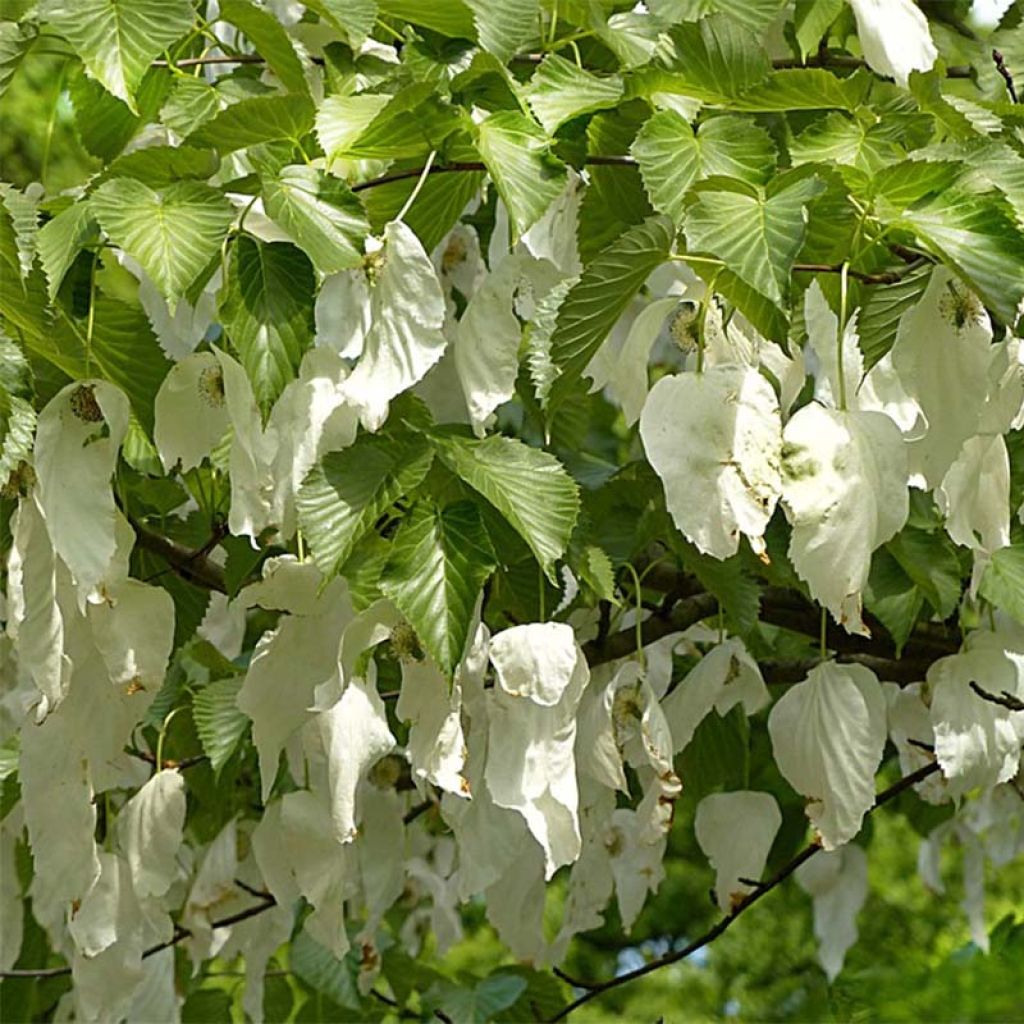

Davidia involucrata var. vilmoriniana - Dove Tree
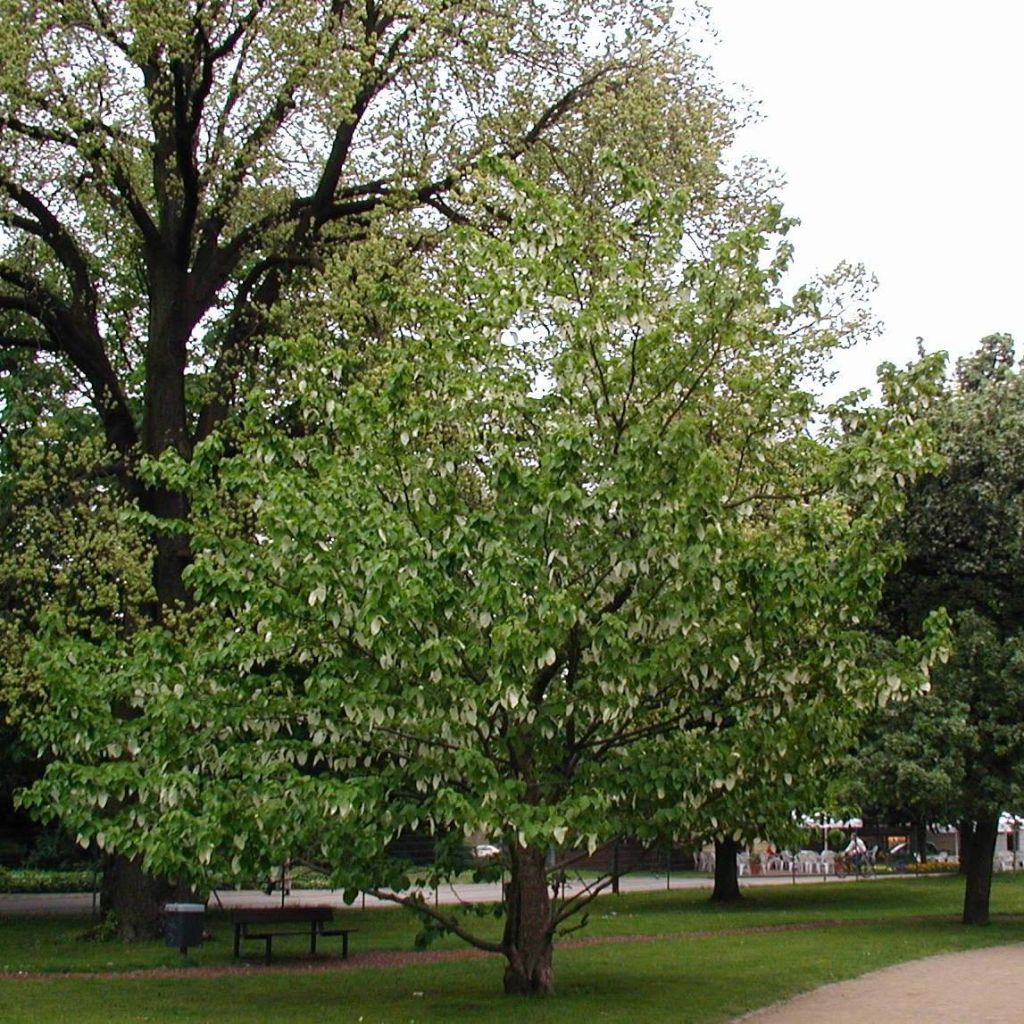

Davidia involucrata var. vilmoriniana - Dove Tree
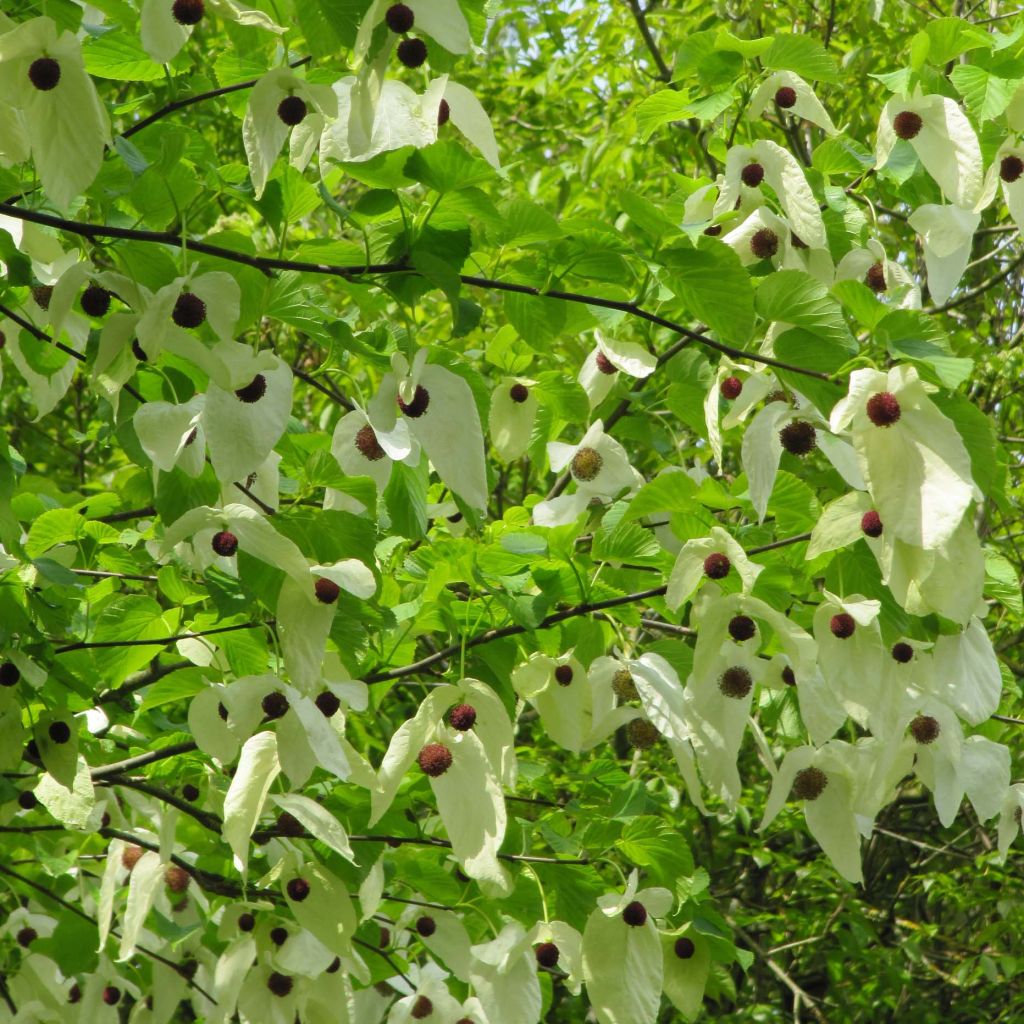

Davidia involucrata var. vilmoriniana - Dove Tree
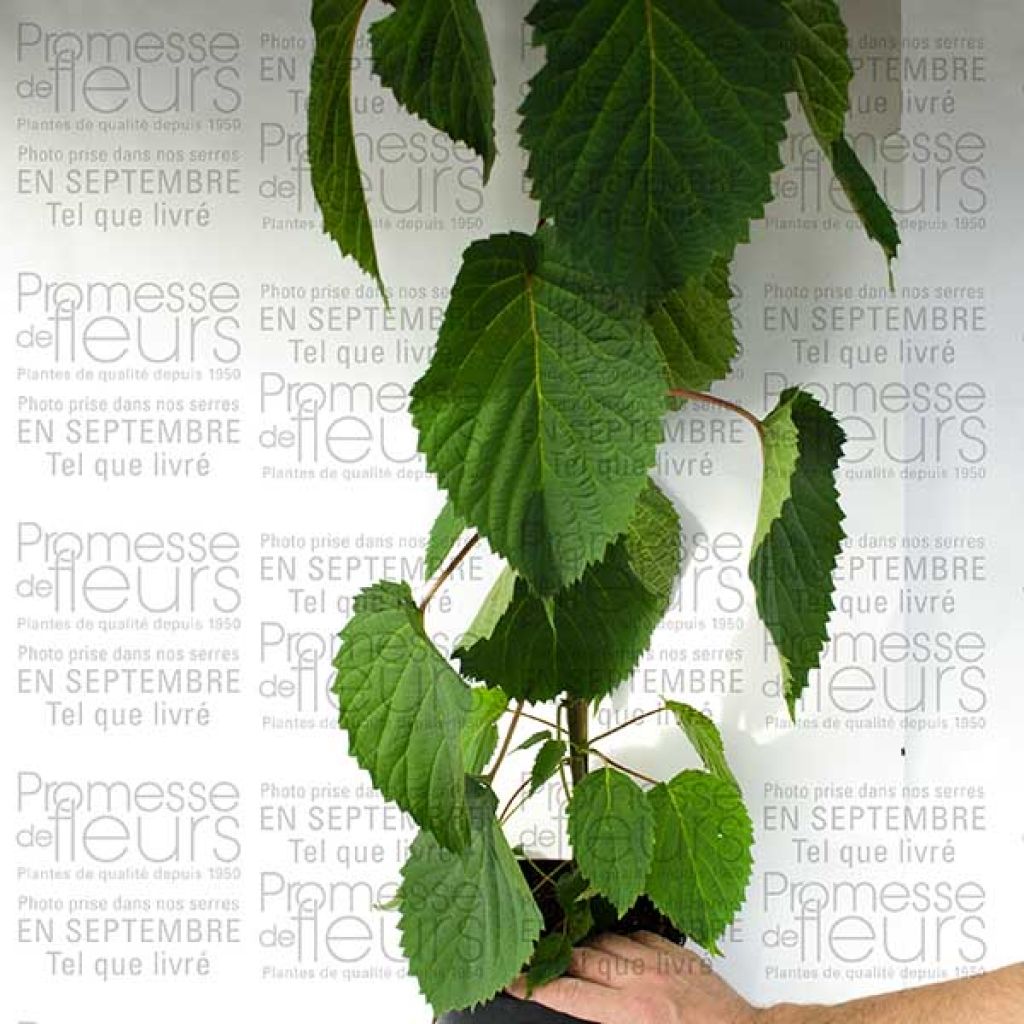

Davidia involucrata var. vilmoriniana - Dove Tree
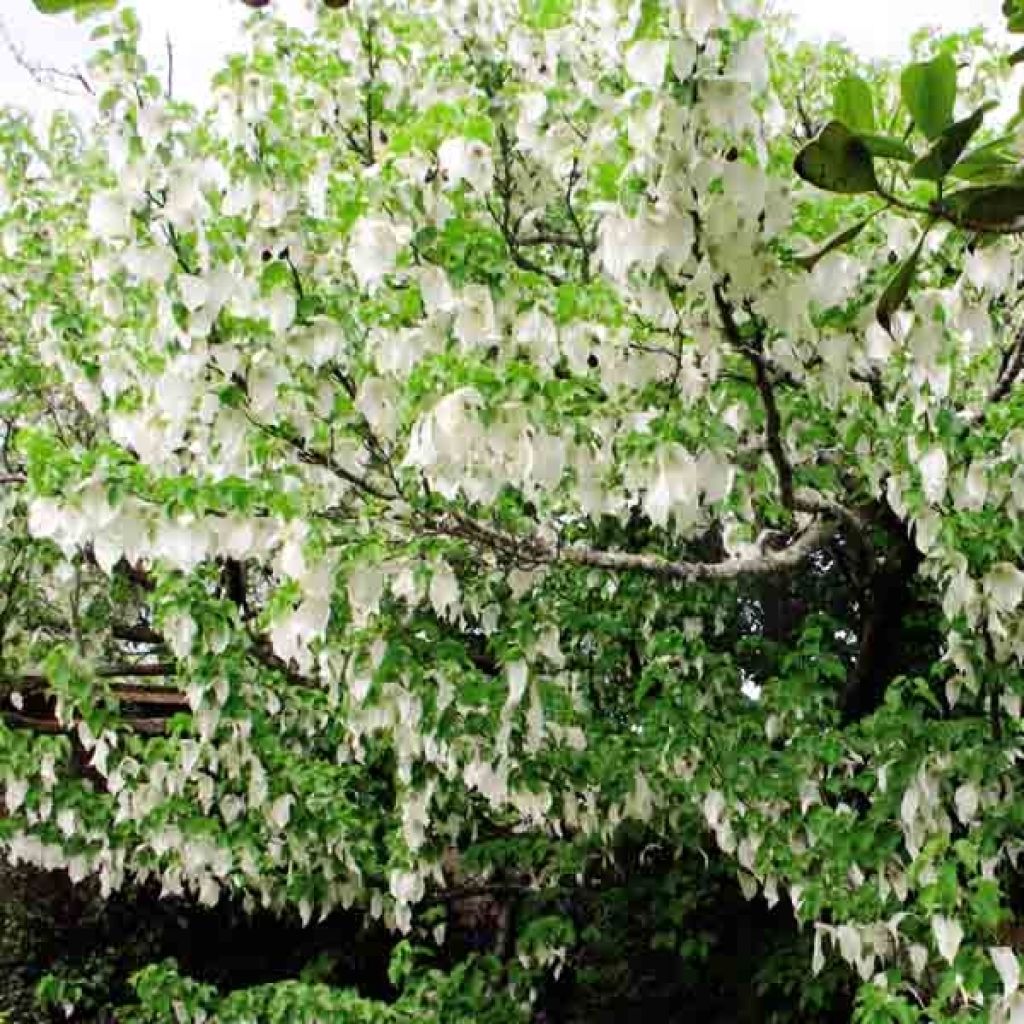

Davidia involucrata var. vilmoriniana - Dove Tree
Davidia involucrata var. vilmoriniana - Dove Tree
Davidia involucrata var. vilmoriniana
Dove Tree, Handkerchief Tree
This item cannot be shipped to the selected country
Oversize package delivery charge from €6.90
Delivery charge from €5.90
More information
Schedule delivery date,
and select date in basket
This plant carries a 24 months recovery warranty
More information
We guarantee the quality of our plants for a full growing cycle, and will replace at our expense any plant that fails to recover under normal climatic and planting conditions.
Oversize package: home delivery by special carrier from €6.90 per order..
Express home delivery from €8.90.
From €5.90 for pickup delivery and €6.90 for home delivery
Express home delivery from €8.90.

Does this plant fit my garden?
Set up your Plantfit profile →
Description
Davidia involucrata var. vilmoriniana, a rare form of the handkerchief tree in cultivation, possesses the same characteristics as the species except for the glabrous aspect of the underside of its leaves. Otherwise, this subspecies has the same characteristics as the type; it offers an extraordinary spring flowering in the form of balls of stamens surrounded by large, decorative white bracts that persist for a long time on the branches. Distributed throughout the branches like little pockets, this unusual flowering is the origin of the plant's vernacular name. This tree, which prefers a humid and cool climate, is quite easy to grow in ordinary but deep, fertile, light, and moist soil. It is a majestic tree that deserves a prominent location, preferably in partial shade, in a sheltered position.
Davidia involucrata is a plant in the Nyssaceae family, just like the Nyssa sylvatica with its splendid autumn colours. This fully hardy tree, the only representative of its genus, is native to the western Sichuan province in China. It was discovered there in 1869 by a missionary botanist named Jean-Pierre Armand-David, who gave it its specific name. In nature, this tree with a rounded habit can live for a hundred years and reach a height of 20m (65ft 7in). In our gardens, it rarely exceeds 12m (39ft 5in) in all directions.
The 'vilmoriniana' form is not widely available in horticultural trade. It is physically distinguishable from the species by its glabrous foliage on the underside, as well as microscopically by a different number of chromosomes that prevents the cross-breeding of these two subspecies to produce fertile hybrid offspring. Its habit is spreading and rounded, and its dimensions do not exceed 12m (39ft 5in) in height and 10m (32ft 10in) in width. The growth is quite slow, depending on the growing conditions. The foliage of this Davidia is deciduous. The heart-shaped leaves measure from 8 to 16cm (6.3in) in length, they have toothed edges and resemble those of the lime tree. They are a bright light green on the top, with a greyish underside, devoid of hairs. Only plants that are around fifteen years old are capable of flowering.
This tree provides remarkable flowering. From May to June, pendulous inflorescences appear, composed of small flowers measuring 1-2cm (0.4 - 0.8in) in diameter, surrounded by a pair of large, unequal bracts, halfway between a leaf and a petal, of a pure white, highly decorative colour. The inflorescences measure 15cm (5.9in) in length. The globular flowers consist of reddish-purple anthers and numerous white stamens. After flowering, pendant fruits of 2-4cm (0.8 - 1.6in) in diameter appear in balls of brown colour that remain on the tree during the winter.
Place the Handkerchief Tree in isolation in your garden, in groves or small groups with large white-flowering dogwoods such as the Cornus controversa, remarkable for its horizontally layered habit, to accompany it in acidic soil, choose, for example, Rhododendrons, Pieris, Leucothoe, or Corylopsis. In limestone soil, opt for Osmanthus, viburnums, Aronia, spireas, Euonymus, or Iteas. Plant shade-loving perennials at its base capable of covering the ground, such as foamflowers, Pachysandra, fairy bells, Christmas roses, lungworts, or hostas.
Report an error about the product description
Davidia involucrata var. vilmoriniana - Dove Tree in pictures
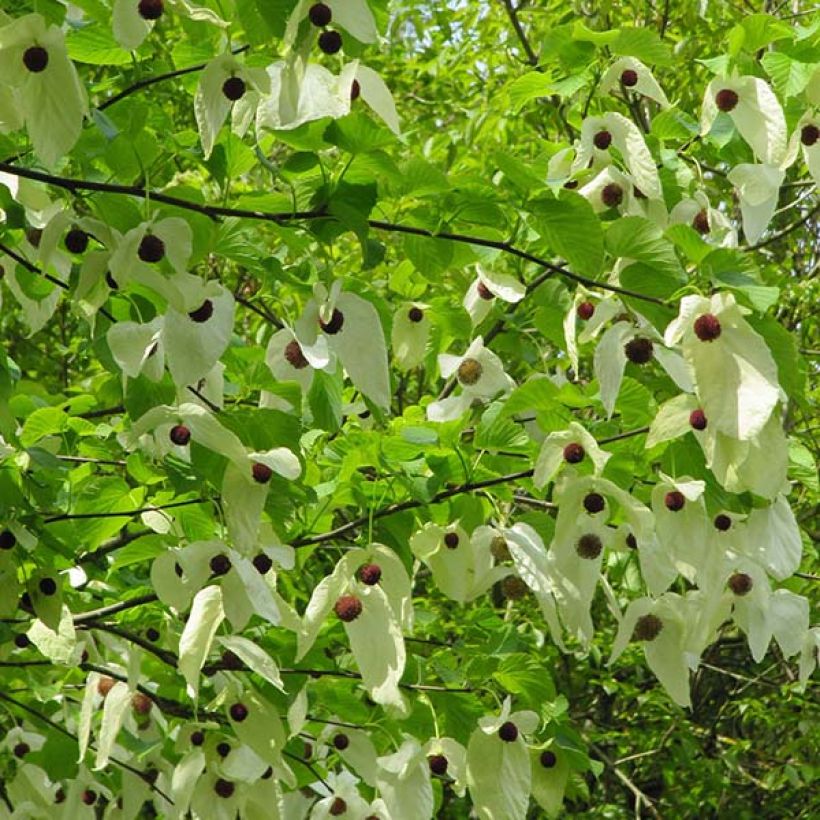

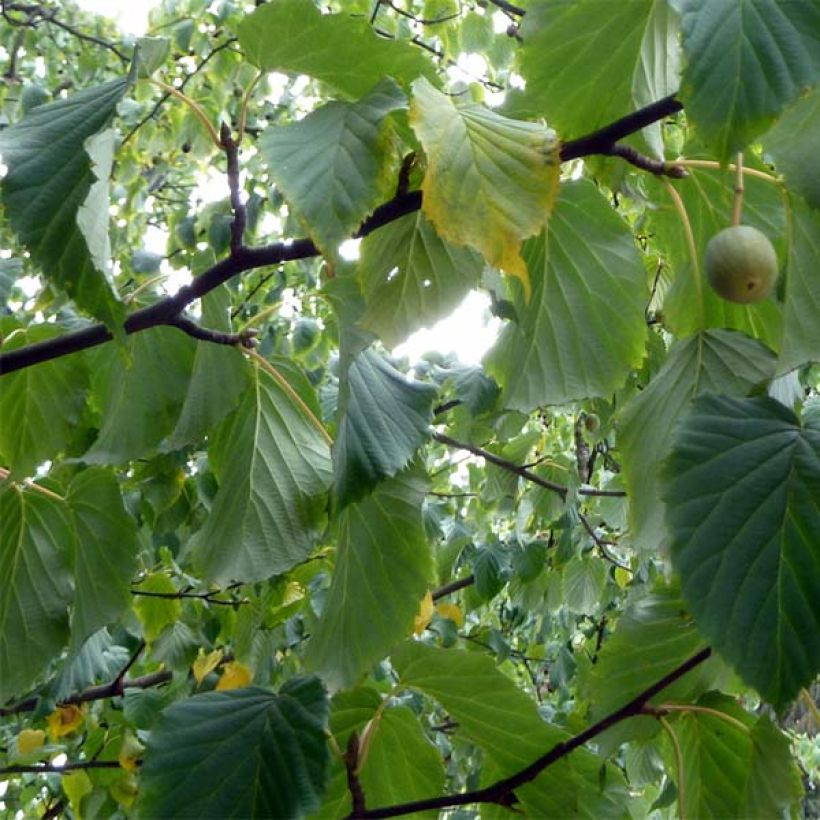

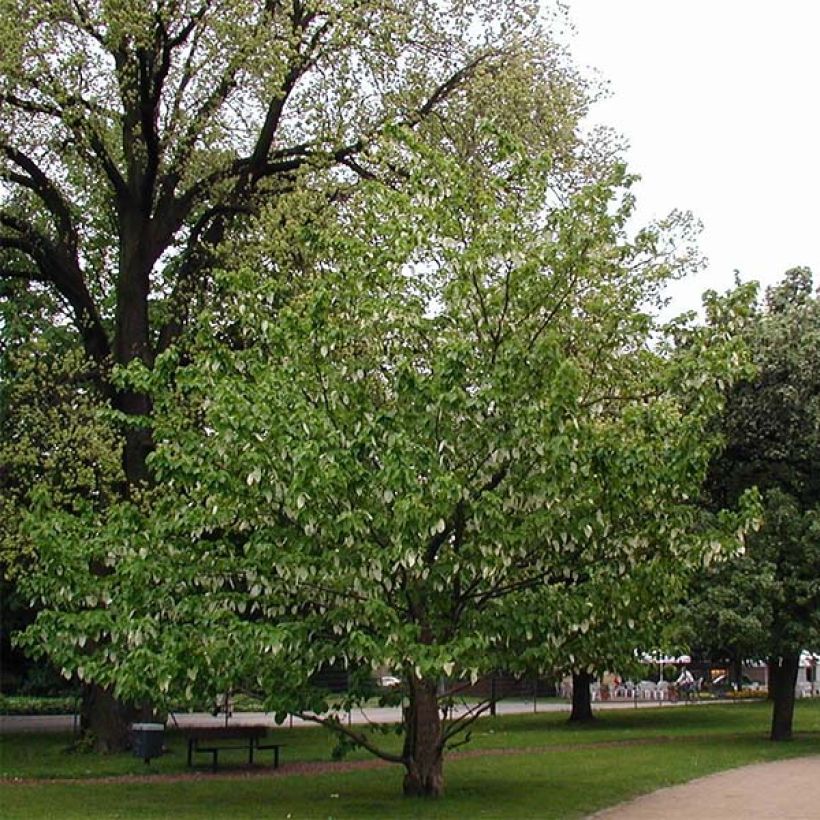

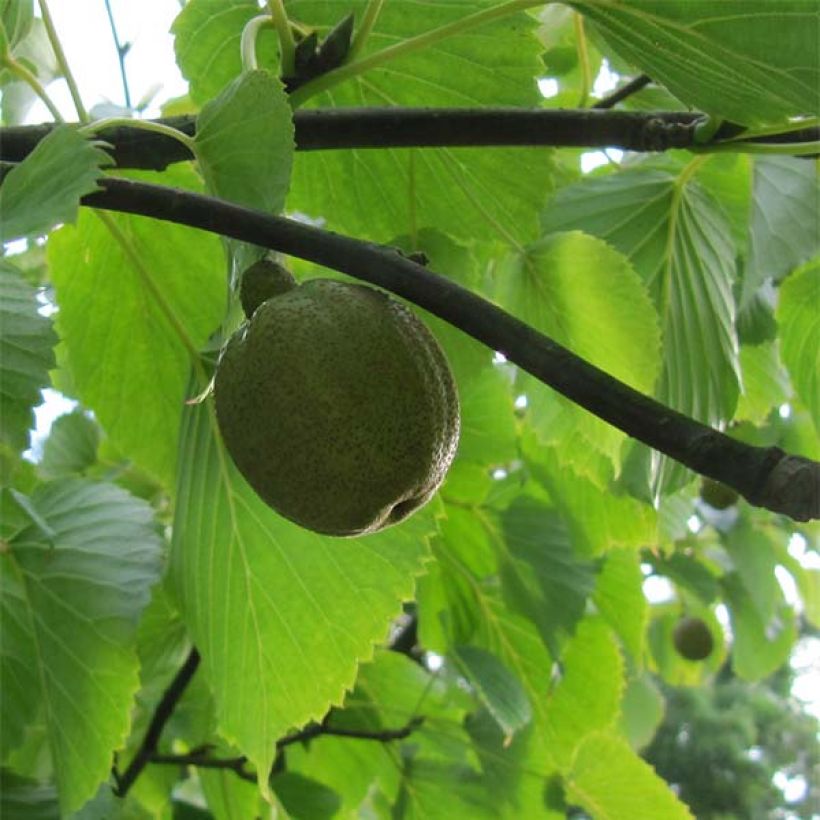

Plant habit
Flowering
Foliage
Botanical data
Davidia
involucrata
var. vilmoriniana
Nyssaceae
Dove Tree, Handkerchief Tree
China
Other Davidia - Dove tree
Planting and care
Davidia involucrata thrives in gentle sunlight and partial shade, sheltered from strong cold winds and spring frosts. It needs direct sunlight to flourish, but avoids scorching situations and heatwaves. This tree tolerates even intense and long-lasting frosts. Plant it in autumn in a fertile, moist but well-drained soil rich in humus. It tolerates the presence of limestone in the soil. In hot seasons, water regularly and let the soil dry between each watering to prevent the roots from rotting due to stagnant water. Do not water in winter. You can fertilize at the end of winter or early spring, at the beginning of vegetation, using organic fertilizer or slow-release fertilizer. You can even treat it preventively at the end of winter with a Bordeaux mixture-based fungicide. Pruning is not obligatory. If desired, from February to April, remove dead wood or wood that compromises the tree's habit.
Planting period
Intended location
Care
-
, onOrder confirmed
Reply from on Promesse de fleurs
Trees for small gardens
Haven't found what you were looking for?
Hardiness is the lowest winter temperature a plant can endure without suffering serious damage or even dying. However, hardiness is affected by location (a sheltered area, such as a patio), protection (winter cover) and soil type (hardiness is improved by well-drained soil).

Photo Sharing Terms & Conditions
In order to encourage gardeners to interact and share their experiences, Promesse de fleurs offers various media enabling content to be uploaded onto its Site - in particular via the ‘Photo sharing’ module.
The User agrees to refrain from:
- Posting any content that is illegal, prejudicial, insulting, racist, inciteful to hatred, revisionist, contrary to public decency, that infringes on privacy or on the privacy rights of third parties, in particular the publicity rights of persons and goods, intellectual property rights, or the right to privacy.
- Submitting content on behalf of a third party;
- Impersonate the identity of a third party and/or publish any personal information about a third party;
In general, the User undertakes to refrain from any unethical behaviour.
All Content (in particular text, comments, files, images, photos, videos, creative works, etc.), which may be subject to property or intellectual property rights, image or other private rights, shall remain the property of the User, subject to the limited rights granted by the terms of the licence granted by Promesse de fleurs as stated below. Users are at liberty to publish or not to publish such Content on the Site, notably via the ‘Photo Sharing’ facility, and accept that this Content shall be made public and freely accessible, notably on the Internet.
Users further acknowledge, undertake to have ,and guarantee that they hold all necessary rights and permissions to publish such material on the Site, in particular with regard to the legislation in force pertaining to any privacy, property, intellectual property, image, or contractual rights, or rights of any other nature. By publishing such Content on the Site, Users acknowledge accepting full liability as publishers of the Content within the meaning of the law, and grant Promesse de fleurs, free of charge, an inclusive, worldwide licence for the said Content for the entire duration of its publication, including all reproduction, representation, up/downloading, displaying, performing, transmission, and storage rights.
Users also grant permission for their name to be linked to the Content and accept that this link may not always be made available.
By engaging in posting material, Users consent to their Content becoming automatically accessible on the Internet, in particular on other sites and/or blogs and/or web pages of the Promesse de fleurs site, including in particular social pages and the Promesse de fleurs catalogue.
Users may secure the removal of entrusted content free of charge by issuing a simple request via our contact form.
The flowering period indicated on our website applies to countries and regions located in USDA zone 8 (France, the United Kingdom, Ireland, the Netherlands, etc.)
It will vary according to where you live:
- In zones 9 to 10 (Italy, Spain, Greece, etc.), flowering will occur about 2 to 4 weeks earlier.
- In zones 6 to 7 (Germany, Poland, Slovenia, and lower mountainous regions), flowering will be delayed by 2 to 3 weeks.
- In zone 5 (Central Europe, Scandinavia), blooming will be delayed by 3 to 5 weeks.
In temperate climates, pruning of spring-flowering shrubs (forsythia, spireas, etc.) should be done just after flowering.
Pruning of summer-flowering shrubs (Indian Lilac, Perovskia, etc.) can be done in winter or spring.
In cold regions as well as with frost-sensitive plants, avoid pruning too early when severe frosts may still occur.
The planting period indicated on our website applies to countries and regions located in USDA zone 8 (France, United Kingdom, Ireland, Netherlands).
It will vary according to where you live:
- In Mediterranean zones (Marseille, Madrid, Milan, etc.), autumn and winter are the best planting periods.
- In continental zones (Strasbourg, Munich, Vienna, etc.), delay planting by 2 to 3 weeks in spring and bring it forward by 2 to 4 weeks in autumn.
- In mountainous regions (the Alps, Pyrenees, Carpathians, etc.), it is best to plant in late spring (May-June) or late summer (August-September).
The harvesting period indicated on our website applies to countries and regions in USDA zone 8 (France, England, Ireland, the Netherlands).
In colder areas (Scandinavia, Poland, Austria...) fruit and vegetable harvests are likely to be delayed by 3-4 weeks.
In warmer areas (Italy, Spain, Greece, etc.), harvesting will probably take place earlier, depending on weather conditions.
The sowing periods indicated on our website apply to countries and regions within USDA Zone 8 (France, UK, Ireland, Netherlands).
In colder areas (Scandinavia, Poland, Austria...), delay any outdoor sowing by 3-4 weeks, or sow under glass.
In warmer climes (Italy, Spain, Greece, etc.), bring outdoor sowing forward by a few weeks.

































